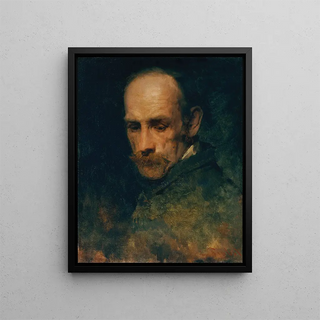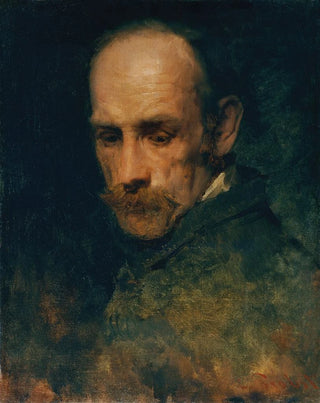Art print | Study of the head - Carl Probst Source: Reproduction | Étude de la tête - Carl Probst


View from behind

Frame (optional)
The artwork "Study of the Head" by Carl Probst is a captivating piece that immerses the viewer in the intricacies of human expression. This art print, far more than a simple sketch, reveals the depth of the artist's observation and his ability to capture the very essence of his subjects. Examining this work, one feels an immediate connection with the emotion and thought that animate it. Probst, through this piece, invites us to explore the nuances of human psychology, while offering a personal and intimate view of his models. Every brushstroke is an invitation to contemplation, an open door to the artist's inner universe and the figures he has chosen to depict.
Style and uniqueness of the art print
Carl Probst's style is distinguished by a blend of realism and expressiveness. In "Study of the Head," the artist skillfully plays with light and shadow, creating striking contrasts that emphasize facial features. This technique, combined with a subtly chosen color palette, brings the image to life, awakens feelings, and provokes reflection. The way Probst renders skin textures and facial expression details is remarkable, demonstrating his talent and mastery. Every element of the art print, from the eyes to the lips, seems to vibrate with its own energy, as if the characters have something to tell us. This stylistic singularity makes "Study of the Head" an essential piece for anyone interested in the representation of the human in art.
The artist and his influence
Carl Probst is an artist whose journey deserves exploration. Trained in a rich artistic environment, he has developed a unique visual language that combines tradition and modernity. His influence is felt not only in his own creations but also in those of many contemporary artists who see in him a source of inspiration. Probst has always strived to understand the complexity of the human soul, and this is reflected in his work. His ability to evoke deep emotions through realistic representations marked his era and continues to influence subsequent generations. By studying "Study of the

Matte finish

View from behind

Frame (optional)
The artwork "Study of the Head" by Carl Probst is a captivating piece that immerses the viewer in the intricacies of human expression. This art print, far more than a simple sketch, reveals the depth of the artist's observation and his ability to capture the very essence of his subjects. Examining this work, one feels an immediate connection with the emotion and thought that animate it. Probst, through this piece, invites us to explore the nuances of human psychology, while offering a personal and intimate view of his models. Every brushstroke is an invitation to contemplation, an open door to the artist's inner universe and the figures he has chosen to depict.
Style and uniqueness of the art print
Carl Probst's style is distinguished by a blend of realism and expressiveness. In "Study of the Head," the artist skillfully plays with light and shadow, creating striking contrasts that emphasize facial features. This technique, combined with a subtly chosen color palette, brings the image to life, awakens feelings, and provokes reflection. The way Probst renders skin textures and facial expression details is remarkable, demonstrating his talent and mastery. Every element of the art print, from the eyes to the lips, seems to vibrate with its own energy, as if the characters have something to tell us. This stylistic singularity makes "Study of the Head" an essential piece for anyone interested in the representation of the human in art.
The artist and his influence
Carl Probst is an artist whose journey deserves exploration. Trained in a rich artistic environment, he has developed a unique visual language that combines tradition and modernity. His influence is felt not only in his own creations but also in those of many contemporary artists who see in him a source of inspiration. Probst has always strived to understand the complexity of the human soul, and this is reflected in his work. His ability to evoke deep emotions through realistic representations marked his era and continues to influence subsequent generations. By studying "Study of the






